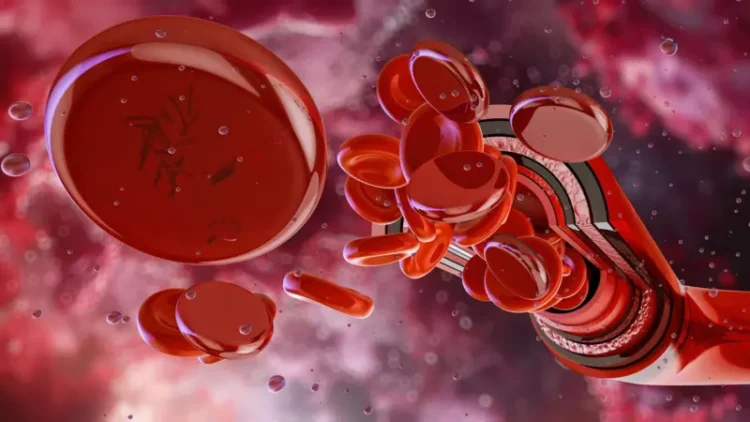Vidyasagar Jagtap
In the dense, verdant forests of Arunachal Pradesh, India, a chance encounter sparked a conservation movement that would resonate far beyond its origins. Ramana Athreya, an astrophysicist with a passion for birdwatching, was traversing a narrow jungle trail near the Eaglenest Wildlife Sanctuary when a flash of vibrant color caught his eye. “I was simply passing through when, out of nowhere, a flash of brilliant color stole my attention,” he later recalled. There, gliding gracefully through the foliage, was a bird unlike any he had ever seen—its olive-grey plumage complemented by a striking black cap and vivid patches of yellow, red, and white on its wings. Before Athreya could fully absorb the sight, the bird vanished into the dense canopy, leaving him with a sense of wonder and an unquenchable curiosity to learn more.
An Unexpected Discovery
That fleeting moment set Athreya on a path of discovery. Over a decade later, in 2006, he returned to the area with renewed determination and was able to document the bird meticulously. Given the species' apparent rarity, Athreya and his team employed non-invasive methods, collecting feathers, photographs, and audio recordings of its soft, flute-like calls. This careful approach ensured the bird's safety while allowing for its formal identification as a new species—the Bugun Liocichla.(Liocichlabugunorum)
A Marvel in Miniature
Measuring approximately 20 to 22 centimeters, the Bugun Liocichla is a small yet captivating bird. Its olive-grey body is accentuated by a jet-black cap and radiant orange-yellow markings around the eyes, with wings adorned in a medley of bright colours. Beyond its visual appeal, the bird's melodious and flute-like song adds to its allure, making it a true gem of the Himalayan forests.
Impact on the Bugun Tribe and the Region
The discovery of the Bugun Liocichla holds significant historical importance, being the first bird species described from India in decades. More profoundly, it galvanized the local Bugun tribe to take proactive steps in conserving their natural heritage. Recognizing the bird as a symbol of their rich biodiversity, the Bugun community established community-managed reserves and initiated sustainable ecotourism projects. These efforts not only protected the bird's habitat but also provided economic benefits to the community, exemplifying a harmonious balance between conservation and livelihood. As a major step towards conservation, the Arunachal Pradesh government finally notified Braiduah Community Reserve under the Wildlife Protection Act, 1972. The reserve is situated adjacent to the Eaglenest Wildlife Sanctuary.
Parallels in Conservation Efforts
Athreya's dedication mirrors the passion of other notable conservationists. Sálim Ali, often hailed as the “Birdman of India,” conducted extensive bird surveys across the country and authored “The Book of Indian Birds,” a seminal work that has inspired generations of ornithologists. Similarly, Asad R. Rahmani's memoir, “Living with Birds,” narrates his lifelong commitment to studying and protecting India's avian species, reflecting the broader narrative of India's conservation movement. Internationally, Mya-Rose Craig's “Birdgirl” chronicles her global birdwatching adventures and environmental activism, emphasizing the universal appeal and urgency of bird conservation. These works collectively underscore the profound impact individuals can have on bird conservation, echoing the transformative journey sparked by Athreya's chance encounter with the Bugun Liocichla.
A Legacy of Hope and a Call to Action
Currently listed as Critically Endangered, with an estimated population of only 14 to 20 individuals, the Bugun Liocichla's survival hangs in the balance. Its precarious status underscores the urgent need for continued conservation efforts. Yet, its story serves as a beacon of hope, illustrating how serendipitous discoveries can lead to meaningful change. As Athreya aptly noted, “Sometimes, all it takes is a single moment in the wild to show us the beauty we must fight to protect.”
The story of this remarkable bird is a call to action for everyone: cherish the wonders of nature, work together with communities, and ensure that such treasures endure for generations to come.
References:
Discovery and Conservation of the Bugun Liocichla:
- • Ramana Athreya - Sanctuary Nature Foundation: Details Athreya's discovery of the BugunLiocichla and subsequent conservation efforts.
- • From a new bird to a new community reserve: India's tribe sets example - Mongabay: Discusses the Bugun tribe's establishment of community reserves following the bird's discovery.
- • https://www.iiserpune.ac.in/news/post/postage-stamp-released-of-bugun-liocichla-the-bird-will-now-go-places/3
- • https://www.deccanherald.com/india/arunachal-pradesh/arunachal-tribe-donates-land-for-critically-endangered-songbird-bugun-liocichla-2940635
Notable Works in Bird Conservation:
- • The Book of Indian Birds by Sálim Ali: A seminal guide illustrating and describing over 500 Indian bird species.
- • Living With Birds by Asad R. Rahmani: A memoir detailing Rahmani's dedication to studying and protecting India's avian species.
- • Birdgirl by Mya-Rose Craig: Chronicles Craig's global birdwatching experiences and environmental activism.























